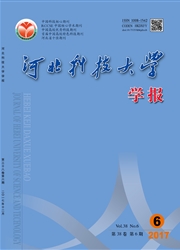

 中文摘要:
中文摘要:
首先简述了截至2013年世界石油天然气管线的铺设情况以及采用熔化极气体保护焊(GMAW)的轨道式管道焊接机器人在工业中的应用情况、工作特点和优势,然后,较为全面地介绍了熔化极气体保护焊中常用传感器的分类,详细分析了它们的焊缝跟踪原理、优缺点和在管道焊接中的应用情况。研究发现,电弧传感器和视觉传感器具有实时性好、信息量大、跟踪精度高等优点,是管道焊接中应用最广泛的两种传感器,单一的传感器在不同工艺的焊缝跟踪中跟踪精度容易受到限制,而采用多种传感器相结合的方法可以极大提高油气管道的焊缝跟踪精度。采用视觉传感和电弧传感相结合的焊缝跟踪系统已经在日本投入天然气现场管线的焊接,并获得了良好的焊接效果。最后得出结论,焊接过程中应该根据工艺特点采取不同的跟踪方法,而采用多种传感器结合的方式可以提高焊缝跟踪精度,必将成为今后研究的热点。
 英文摘要:
英文摘要:
This paper first outlines the worldwide oil and gas pipeline laying situation by 2013 and industrial applications, the working characteristics and advantages of orbital pipe welding robots using the gas metal arc metal(GMAW). Then the classifi- cations of commonly used welding seam tracking sensors are comprehensively introduced. The sensor working principles, advantages and disadvantages and the application situation in pipeline welding are analysed in details. The studies show that arc sensors and visual sensors have many advantages such as good real-time characteristic, informativeness and high tracking preci- sion, and are most widely used in pipeline welding. Using single sensor in different process can limit the tracking precision easi- ly, but a system with multiple sensors will greatly improve the tracking precision in oil and gas pipeline welding. A system using visual sensor and arc sensor has been used in the gas field pipeline welding in Japan and a good effect has been achieved.Finally the conclusion is drawn that suitable seam tracking sensor should be chosen according to the process features and meth- ods, and using a variety of sensors can improve the welding seam tracking precision, which will become the focus of future researches.
 同期刊论文项目
同期刊论文项目
 同项目期刊论文
同项目期刊论文
 期刊信息
期刊信息
